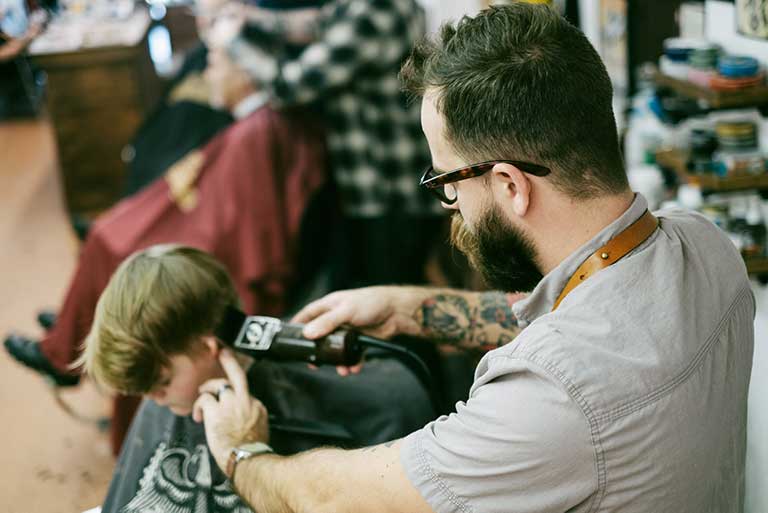Barbers cut and trim hair and beards, usually exclusively for male clients. However, some may perform additional duties, such as coloring and shampooing hair and giving scalp massages. Weekend and evening work is typically required, since those tend to be the busiest times. Work usually involves standing for many hours, and barbers may need to protect their hands when using chemicals.
Experienced barbers can receive a master designation from the state, which is the highest level in the field, after obtaining the requisite education and experience and passing state-issued examinations.
| Degree Level | State-approved training program, certificate or diploma |
| Degree Field | Barber/cosmetology |
| Licensure | State licensure is required for barbers in all states; qualifications for master barbers vary; typical requirements include minimum work experience (up to 1,500 hours) for master barber examination eligibility |
| Key Skills | Stamina, customer-service skills, creativity, interpersonal skills, time management |
| Salary | While salary statistics specifically for master barbers isn’t available, barbers and other hairdressers in general earned an average yearly salary of $33,220 as of May 2018. |
Now let’s take a look at the steps barbers take to obtain the title of master barber.
Step 1: Complete Barbering School
The first step toward becoming a master barber is to complete a barbering program, which combines classroom instruction and hands-on training to teach students about cutting hair and shaving. The program may also include instruction in elements of cosmetology. These programs are offered at a variety of places, including community colleges, cosmetology schools, or vocational training programs.
Coursework includes clipper cutting, facial massage, hygiene, sterilization and sanitation, scissors-over-comb techniques, and shaving. Courses may be offered in the day or evening to accommodate individuals who need a flexible schedule. The program may also prepare students for job interviews and state licensure as a barber. Before applying to any barbering school, check with the state board to ensure that any licensing requirements will be met upon graduation.
Step 2: Complete an Apprenticeship
After completing barbering school, consider completing a barbering apprenticeship, which allows aspiring master barbers to work and learn under a licensed, experienced master barber. In fact, some states require completion of an apprenticeship before becoming a master barber. In some states, you may have to satisfy a minimum number of hours, while other states require you to work for a minimum number of years.
Step 3: Become Licensed
The next step is to earn the master barber designation by fulfilling licensing requirements, which generally include passage of several examinations in addition to completion of a barbering program and apprenticeship. These exams vary by state. For example, Minnesota requires that barbers earn at least 75% on written, oral, and practical exams that test them on hair cutting as well as state barber statutes and laws.
Step 4: Advance Your Career
After becoming licensed and gaining experience in barbering, you might advance your career as a master barber by opening your own shop. Taking courses in marketing, sales, and business management will help you establish and run your own business. Also, attending hairstyling conferences, seminars, and expositions can help you stay on top of current trends, techniques, and fashions. There, you’ll learn the skills you need to expand your client base, move to a more lucrative salon or grow your business.
To become a master barber, you must fulfill state requirements, which generally include completion of a postsecondary barbering program, a barbering apprenticeship, and passage of licensing exams.

